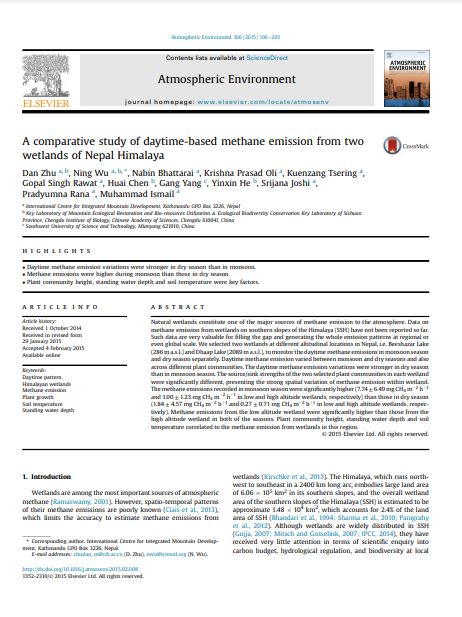
Natural wetlands constitute one of the major sources of methane emission to the atmosphere. Data on methane emission from wetlands on southern slopes of the Himalaya (SSH) have not been reported so far. Such data are very valuable for filling the gap and generating the whole emission patterns at regional or even global scale. We selected two wetlands at different altitudinal locations in Nepal, i.e. Beeshazar Lake (286 m a.s.l.) and Dhaap Lake (2089 m a.s.l.), to monitor the daytime methane emissions in monsoon season and dry season separately. Daytime methane emission varied between monsoon and dry seasons and also across different plant communities. The daytime methane emission variations were stronger in dry season than in monsoon season. The source/sink strengths of the two selected plant communities in each wetland were significantly different, presenting the strong spatial variation of methane emission within wetland. The methane emissions recorded in monsoon season were significantly higher (7.74 ± 6.49 mg CH4 m−2 h−1 and 1.00 ± 1.23 mg CH4 m−2 h−1 in low and high altitude wetlands, respectively) than those in dry season (1.84 ± 4.57 mg CH4 m−2 h−1 and 0.27 ± 0.71 mg CH4 m−2 h−1 in low and high altitude wetlands, respectively). Methane emissions from the low altitude wetland were significantly higher than those from the high altitude wetland in both of the seasons. Plant community height, standing water depth and soil temperature correlated to the methane emission from wetlands in this region.